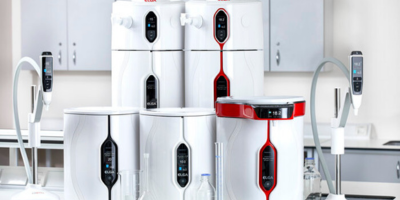Let’s be honest — “clean water” used to be enough. Turn on the tap, fill a glass, and move on with your life. But these days, “clean” doesn’t quite cut it. Whether you’re managing a cutting-edge research lab or working in a high-stakes healthcare environment, water isn’t just a convenience — it’s a critical variable that can’t be left to chance.
And that’s where the story of advanced water purification really begins.
When ‘Clean’ Gets Complicated
If you’ve ever set foot inside a biotechnology facility or peered into the workings of a hospital’s sterilization unit, you’ll know water plays a much more specialized role than we give it credit for. It’s not just about taste or appearance. It’s about ions. Bacteria. Endotoxins. Molecular consistency. Water, at its core, becomes a reagent — and any variation, no matter how minor, can alter the outcome of an experiment or compromise the safety of a medical procedure.
That’s why more organizations are stepping beyond the standard filtration units and diving deep into advanced water purification technologies. Think multi-stage reverse osmosis systems, UV oxidation, ultrafiltration, and deionization — all working in tandem to craft water that’s not just safe, but scientifically dependable.
The Science Behind the Sip (Or the Sample)
The realm of lab water systems is a fascinating one. In research labs, water isn’t just a solvent — it’s part of the science. If a single contaminant finds its way into your buffer solution or pipette tip, your entire batch of results could go sideways. That’s not just inconvenient. That’s months of research down the drain.
That’s why these systems are often broken down into tiers: Type I (ultrapure), Type II, and Type III — each meeting a different set of criteria depending on the demands of the application. Type I might go into HPLC or cell culture, while Type III is better suited for autoclave feed water. Precision isn’t optional. It’s required.
And these systems don’t just stop at filtration. They actively monitor conductivity, resistivity, and microbial levels to ensure purity doesn’t waver — even when the surrounding environment does.
In Healthcare, It’s Life or Death
Step into a surgical suite or a dialysis center, and water suddenly takes on a whole new level of seriousness. It’s not just about performance; it’s about protection. In environments like these, waterborne pathogens like Legionella or Pseudomonas aren’t rare — they’re ruthless. And even trace levels of organic compounds can lead to serious complications in vulnerable patients.
This is where healthcare water solutions step in with surgical precision. These setups are purpose-built, often incorporating thermal disinfection, continuous UV monitoring, and high-capacity ultrafilters designed to meet — and exceed — AAMI and CDC standards.
From hemodialysis machines to instrument sterilization, the margin for error is razor thin. And while the average person might never think twice about what flows from a faucet, professionals in the healthcare world live and breathe these specs every single day.
But What About Sustainability?
Now, here’s the rub. You might be thinking, “Sounds like a lot of tech, a lot of filters… isn’t this bad for the environment?” Good question — and you’re not wrong to ask it.
Older systems used to be water hogs. They’d dump gallons of perfectly usable water down the drain just to squeeze out that last contaminant. But times are changing. Today’s systems are built with sustainability in mind: closed-loop recycling, variable-flow pumps, and intelligent sensors that minimize waste while maximizing efficiency.
Some setups are even smart enough to detect downtime and shut themselves off automatically — helping facilities cut down on utility costs without sacrificing water quality. Innovation and responsibility can, in fact, go hand in hand.
The Human Side of High-Purity Water
Here’s the part we don’t talk about enough: the people. Behind every lab water unit humming quietly in the corner, there’s a researcher chasing a breakthrough. Behind every hospital-grade water system, there’s a patient trusting their treatment. Behind every purified droplet, there’s someone who cares enough to demand better.
Water may be the world’s most abundant resource, but when it comes to critical settings, it’s also the most controlled. And that control — that quiet, often overlooked precision — is the reason so many breakthroughs and recoveries are even possible in the first place.
